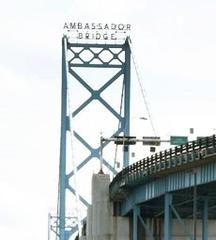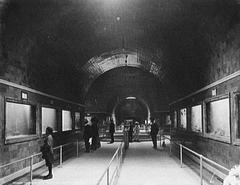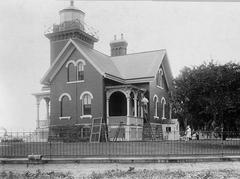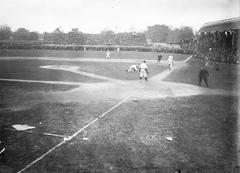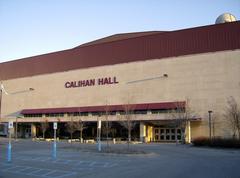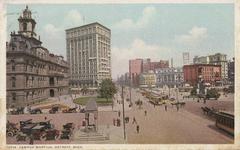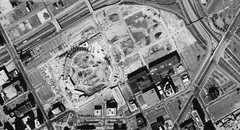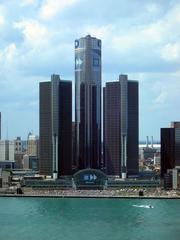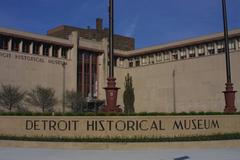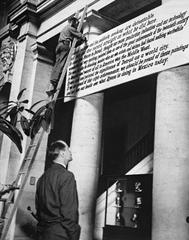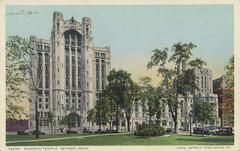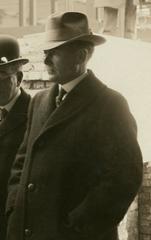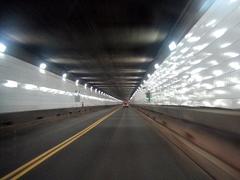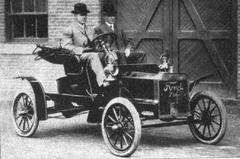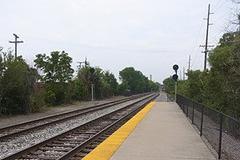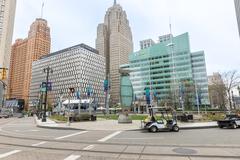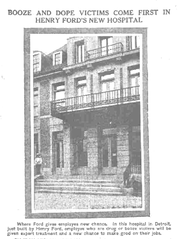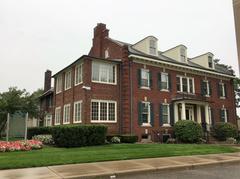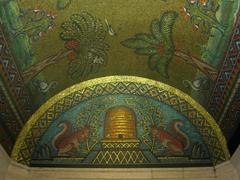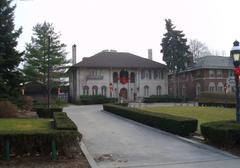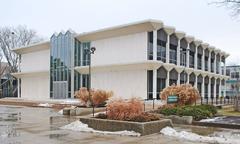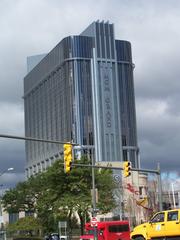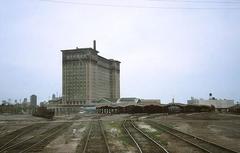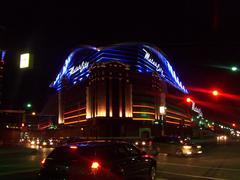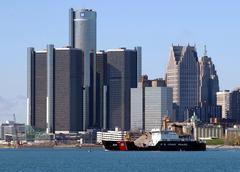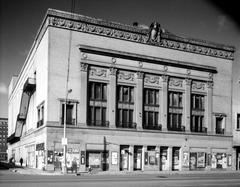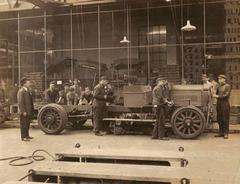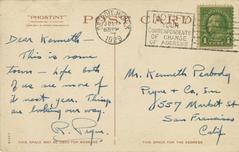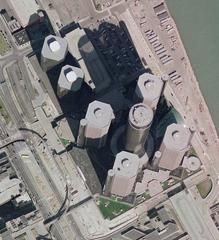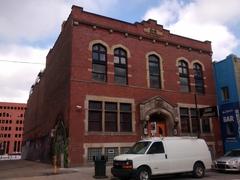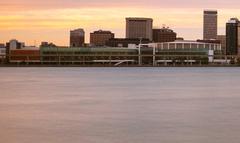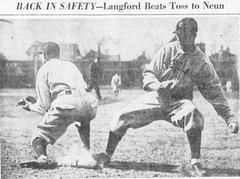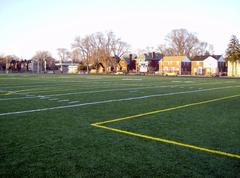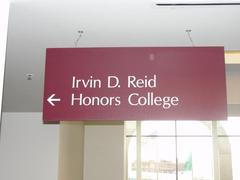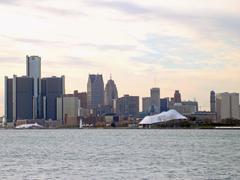
Nellie Leland School Detroit: Visiting Hours, History, and Visitor Guide
Date: 04/07/2025
Introduction
The Nellie Leland School in Detroit, Michigan, is a landmark of educational innovation and architectural distinction. Originally established in the early 20th century to serve children with physical disabilities, the school reflects Detroit’s progressive efforts in inclusive education and accessibility. Today, while no longer functioning as a school, its transformation into Leland Lofts ensures the preservation of its historic character and architectural beauty. This guide provides an in-depth look at the school’s history, architectural features, current access policies, nearby attractions, and practical tips for visitors interested in Detroit’s heritage.
For further exploration, official resources and detailed historical accounts can be found at the Detroit Historical Society, Detroit Historic Code, and Dwell Magazine’s feature on Leland Lofts.
Table of Contents
- Introduction
- History and Establishment
- Architectural Significance
- Transformation into Leland Lofts
- Visitor Information
- Frequently Asked Questions (FAQ)
- Conclusion
- References and Further Reading
History and Establishment
The Nellie Leland School was established in 1918–1919, named after Detroit philanthropist and public health advocate Nellie Leland. At a time when educational opportunities for disabled children were extremely limited, the school was among the first public institutions in the United States designed exclusively for children with physical disabilities (Detroit Historic Code). Its mission centered on inclusion, dignity, and accessibility, setting a precedent for future educational facilities.
The original structure was constructed during a period of significant urban growth in Detroit, with a third-floor addition in 1921 to accommodate increasing enrollment. The school quickly became a model for specialized education, offering physical therapy, arts and crafts, and recreational spaces tailored to its students’ needs (Detroit1701).
Architectural Significance
Exterior Features
The Nellie Leland School showcases elements of the Arts and Crafts and Collegiate Gothic styles. Designed by William G. Malcomson, the building features:
- Red brick masonry with limestone trim: Durable and visually striking, these materials define the school’s dignified appearance.
- Pointed arches and decorative stonework: Gothic-style arches and carved panels emphasize verticality and craftsmanship.
- Buttressed entrances and terra cotta ornamentation: These features add structural emphasis and aesthetic interest.
- Large multi-paned windows: Allow abundant natural light, enhancing the building’s inviting atmosphere.
- Symmetrical facades: Central entrances framed by stone surrounds, with a prominent nameplate above the main doorway (Detroit Historical Society).
Interior Design and Accessibility
The interior of the original school building continued the Gothic theme, with high ceilings, arched doorways, decorative plasterwork, glazed brick wainscoting, and original hardwood floors. Ramps, wide corridors, and one of Detroit’s first school elevators were incorporated to serve students with mobility impairments. Specialized therapy rooms, a gymnasium, and an auditorium reflected the school’s holistic approach to education (Detroit Urbex).
Accessibility innovations included wide doorways, handrails, grab bars, and custom furniture—all pioneering features for their era (Detroit Free Press).
Transformation into Leland Lofts
After the school closed in 1981, the building underwent adaptive reuse and was converted into residential lofts—Leland Lofts. The transformation preserved key architectural details, including the brick façade, large classroom windows, and much of the original interior woodwork. Classroom cabinets became storage units, and hallway lockers remain as reminders of the building’s educational past (Dwell Magazine).
Leland Lofts now features modern amenities such as updated kitchens and bathrooms, in-unit laundry, and rooftop decks with panoramic city views. The building’s adaptive reuse is a leading example of Detroit’s efforts to preserve its architectural heritage while revitalizing urban neighborhoods (City of Detroit Adaptive Reuse).
Visitor Information
Access and Policies
- Current Access: Leland Lofts is a private residential building. There are no regular public visiting hours or interior tours, but the exterior can be appreciated from the street.
- Tours and Tickets: Public tours are not available. Occasionally, open houses are held, and real estate appointments can be arranged for prospective buyers (O’Connor Real Estate).
- Accessibility: The exterior and surrounding sidewalks are wheelchair accessible.
Nearby Attractions
- Lafayette Park: A mid-century modern neighborhood designed by Mies van der Rohe.
- Eastern Market: Historic market district known for food, art, and cultural events.
- Detroit Institute of Arts: Renowned for its collections and architectural beauty.
- Guardian Building: An Art Deco skyscraper, open for public visits.
Travel Tips
- Getting There: Located at 1395 Antietam Avenue, Detroit, the site is easily accessible by car or public transit.
- Parking: Street parking is available—observe local regulations.
- Photography: The building’s façade and surroundings offer excellent photography opportunities. Please respect residents’ privacy.
- Combine Visits: Pair your visit with walks through Lafayette Park or nearby Eastern Market for a richer experience.
Frequently Asked Questions (FAQ)
Q: Can I tour Leland Lofts or the former Nellie Leland School interior?
A: No, the interior is not open to the public except during occasional open houses or by appointment with real estate agents.
Q: What are the visiting hours?
A: There are no official visiting hours; the exterior can be viewed during daylight.
Q: Is the building wheelchair accessible?
A: The exterior and neighborhood sidewalks are accessible.
Q: Are guided tours available?
A: No regular tours are offered, but local historical societies may offer related programming.
Q: What other historic sites are nearby?
A: Lafayette Park, Eastern Market, Detroit Institute of Arts, and the Guardian Building.
Conclusion
The Nellie Leland School is a testament to Detroit’s legacy of educational innovation, social inclusion, and architectural preservation. Its transformation into Leland Lofts exemplifies the city’s adaptive reuse movement—balancing respect for history with the needs of contemporary urban life. While public access to the building’s interior is limited, its historic exterior and surrounding neighborhood offer rich opportunities for exploration, reflection, and appreciation.
For ongoing updates, virtual tours, and in-depth content on Detroit’s architectural and cultural landmarks, consider visiting the Detroit Historical Society, exploring virtual resources, or downloading relevant heritage apps. Embrace the story of the Nellie Leland School as a symbol of progress and resilience in Detroit’s urban landscape.
References and Further Reading
- Detroit Historic Code
- Detroit Historical Society
- Detroit Urbex
- Detroit Free Press
- Detroit Land Bank Authority
- Visit Detroit
- Detroit Greenways Coalition
- Dwell Magazine
- City of Detroit Adaptive Reuse
- Historic Structures
- Curbed Detroit
- Detroit1701
- Roadtrippers
- Archinect
- O’Connor Real Estate

